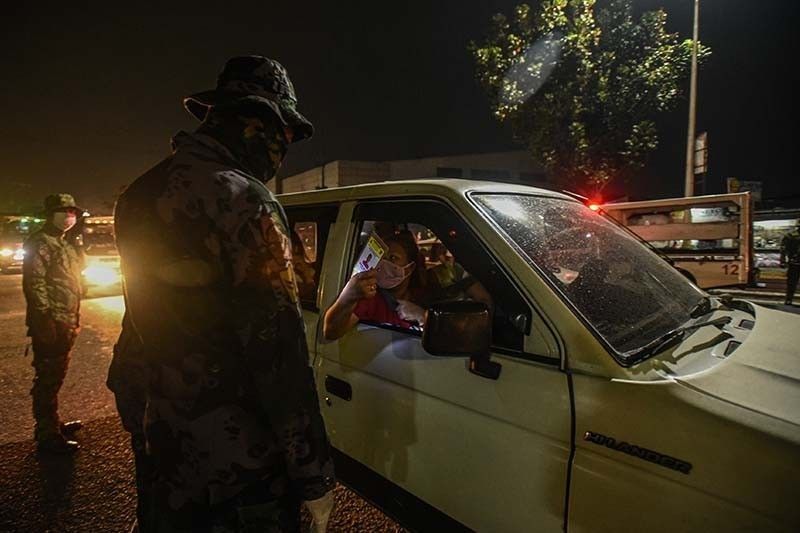Magalong: LGUs need to do more to find, isolate possible COVID-19 cases

MANILA, Philippines — The incremental improvements in contact tracing to address the coronavirus pandemic are still not enough to address a lack in the country's abilit to trace potential COVID-19 patients, the government's "contact tracing czar" told a House panel Wednesday.
Speaking at a hearing by the House Committee on Metro Manila Development assessing the contact tracing, testing, and quarantine efforts in the National Capital Region, the Baguio City mayor said that local governments often prioritized other initiatives and "failed to realize" the merit of contact tracing.
"A lot of local government units, they would rather focus on relief operations and the establishment of facilities and looking for funds or funding for testing. They tend to forget contact tracing...There is an improvement, but if you ask me if I’m satisfied with this improvement, I am not," he said in Filipino and English.
"The way I see it, [we have] to capacitate the LGU [and] further enhance the contact tracing efficiency ratio. It’s up to them to tweak it so it will fit their environment. I can only do so much...The only way to bridge the gap, it would be a big help to be able to release the funds under Bayanihan 2 to be able to recruit more contact tracers," he added.
READ: DOH: LGUs are 'main implementers' of contact tracing efforts
Magalong added that as a result, there is little training and incentive for contact tracers.
15,103 contact tracing teams formed
As of August 18, Magalong said, the country has 15,103 contact tracing teams totaling to 149,043 contact tracers with ten members per team on average.
Citing data from the Johns Hopkins University, Rep. Eric Martinez (Valenzuela) added that around 20,000 for every 1 million Filipinos were tested. "We're doing better than other countries [in terms of] the death rate...the more you test, the death rate goes down," he said.
The World Health Organization recommends a ratio of one contact tracer for every 800 people. It has also advised governments across the globe to focus on testing, contact tracing, maintaining physical distance, and wearing a mask, which it said were “the basics of public health," instead of waiting for potential vaccines against the pathogen.
According to Magalong, the government's coronavirus task force monitors performance indicators for LGUs which include a 1:37 contact tracing ratio for urban areas and 1:30 for rural ones. LGUs should also have 70% of high-risk contacts traced within 24 hours and 100% of high-risk contacts swabbed.
Possible doubling of cases by mid-September
When medical collectives called for a "time-out" enhanced community quarantine at the start of August, they also urged the national government to retool its existing strategies against the pandemic, including its militarist lockdowns and "unscientific" medical solutions.
“We propose the ECQ be used as a timeout to refine our pandemic control strategies addressing the following urgent conditions or problems: hospital workforce efficiency, failure of case finding and isolation, failure of contact tracing and quarantine, transportation safety, workplace safety, public compliance with self-protection, [and] social amelioration," the Philippine College of Physicians' manifesto, which gained traction like wildfire, read.
READ: DILG touts contact tracing and testing; COVID Shield wants stricter enforcement
At a House meeting that was supposed to be about the contact tracing, testing, and quarantine efforts in the Metro, the National Capital Region Police Office was also invited to present its Oplan Kalinga initiative, which is a program that involves transferring coronavirus patients from their homes to government-run quarantine facilities.
Police Col. Bernard Yang, chief of the NCRPO Regional Operations Division, also presented, among others, figures on arrests of "disobedient" quarantine violators since ECQ was imposed in March. It added that the 359 officers deployed as contact tracers were able to trace over 47,000 individuals.
For his part, Rep. Edgar Erice (Caloocan) said that he sees a possible doubling of coronavirus cases by mid-September because there is still no enhanced testing and tracing.
Although the government's coronavirus task force insists it has recalibrated its approach to addressing the pandemic, the health department continues to record thousands of cases every day, and the country is still under the world's longest quarantine.
In its latest tally on Wednesday afternoon, the health department said that the national caseload stands at 202,361 with the most number of coronavirus infections in Southeast Asia and having surpassed mainland China’s tally.
READ: Philippines’ COVID-19 caseload climbs past 202,000 with 5,277 new infections
- Latest
- Trending





























